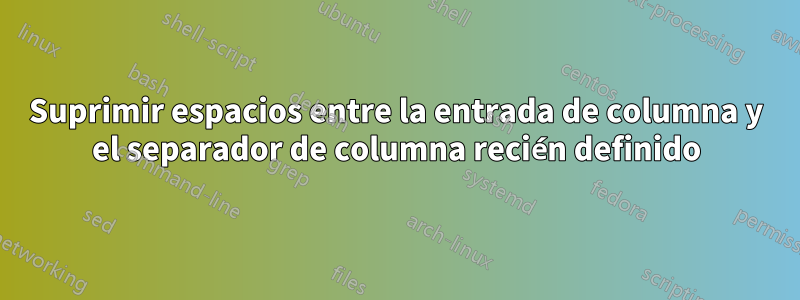
Como se explicó en otra publicación, he definido un separador de columnas de la siguiente manera:
\newcolumntype{"}{@{\hskip\tabcolsep\vrule width 1pt\hskip\tabcolsep}}
Con el separador normal |solía @{}hacer la entrada de columnas una al lado de la otra. Esto ya no funciona: ¿hay alguna manera de hacer que funcione también con el nuevo separador?
Como ejemplo de trabajo mínimo completo, en la primera tabla el texto Roundestá separado del separador, mientras que en la segunda el texto está al lado de él:
\documentclass[a4paper,twoside]{article}
\usepackage{epsfig}
\usepackage{subfigure}
\usepackage{calc}
\usepackage{amssymb}
\usepackage{amstext}
\usepackage{amsmath}
\usepackage{amsthm}
\usepackage{multicol}
\usepackage{pslatex}
\usepackage{apalike}
\usepackage{ulem}
\usepackage{tabularx}
\makeatletter
\newcommand{\thickhline}{%
\noalign {\ifnum 0=`}\fi \hrule height 1.2pt
\futurelet \reserved@a \@xhline
}
\newcolumntype{"}{@{\hskip\tabcolsep\vrule width 1pt\hskip\tabcolsep}}
\makeatother
\begin{document}
\title{Title}
\maketitle
\begin{table} % Add the following just after the closing bracket on this line to specify a position for the table on the page: [h], [t], [b] or [p] - these mean: here, top, bottom and on a separate page, respectively
\centering % Centres the table on the page, comment out to left-justify
\tiny
\begin{tabular}{@{}c@{}" c@{ }|@{ }c " c@{}|@{}c " c@{}|@{}c" c@{}|@{}c}
%\toprule % Top horizontal line
\textbf{\footnotesize{Round}} & \multicolumn{8}{c}{\textbf{\footnotesize{Test run}}} \\ % Amalgamating several columns into one cell
%\cline{2-9}
%\cmidrule(l){2-5} % Horizontal line spanning less than the full width of the table - you can add (r) or (l) just before the opening curly bracket to shorten the rule on the left or right side
& \multicolumn{2}{c"}{\textbf{1}} & \multicolumn{2}{c"}{\textbf{2}} & \multicolumn{2}{c"}{\textbf{3}} & \multicolumn{2}{c}{\textbf{4}}\\ % Column names row
%\cline{2-9}
& devices&users & devices&users & devices&users & devices&users\\
\thickhline
\textbf{1} & $440$ & $10$ & $440 $ & $10^2$ & $440$ & $10^3$ & $440$ & $ 10^4$
\end{tabular}
\caption{Table caption text}
\label{tab:template}
\end{table}
\begin{table}
\centering
\tiny
\begin{tabular}{@{}c@{}| c@{ }|@{ }c " c@{}|@{}c " c@{}|@{}c" c@{}|@{}c}
\textbf{\footnotesize{Round}} & \multicolumn{8}{c}{\textbf{\footnotesize{Test run}}} \\ % Amalgamating several columns into one cell
& \multicolumn{2}{c"}{\textbf{1}} & \multicolumn{2}{c"}{\textbf{2}} & \multicolumn{2}{c"}{\textbf{3}} & \multicolumn{2}{c}{\textbf{4}}\\
& devices&users & devices&users & devices&users & devices&users\\
\thickhline
\textbf{1} & $440$ & $10$ & $440 $ & $10^2$ & $440$ & $10^3$ & $440$ & $ 10^4$
\end{tabular}
\caption{Table caption text}
\label{tab:template}
\end{table}
\end{document}
Respuesta1
Usar
\newcolumntype{"}{!{\vrule width 1pt}}
no
\newcolumntype{"}{@{\hskip\tabcolsep\vrule width 1pt\hskip\tabcolsep}}
!es similar @pero no suprime el \tabcolsepespacio automático, por lo que un adyacente @{}sí lo suprime.


